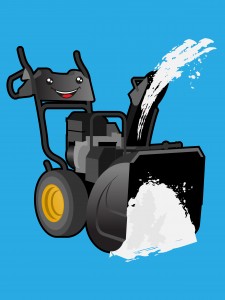For harsh winter weather an example of a hazard might be a slip or fall in an icy car park or entrance to your building. The persons affected are both employees and visitors. The initial likelihood, in the absence of control, is high in frosty weather (we only have to watch a car park or public footpath in heavy frost to see this), and the severity of injury received would also be high, especially if you have older or infirm employees or visitors. For example, a broken hip in an older person could be a life changing injury that might prevent them returning to work, similarly a severe back or head injury in any member of the population. For these reasons, this hazard would be given a HIGH overall risk rating. A suitable control measure could be the clearing of snow and the application of deicing salt to all areas accessed by employees or visitors, particularly designated pedestrian areas and steps where frost is likely to build up. Snow is best cleared with a mechanical aid like one of our snow blowers, while deicing salt is cheap, easy to apply and very effective, becoming more efficient as it is walked into the ground by traffic.
The Health and Safety Authority have a very helpful page on slips, trips and falls in snow and ice. It contains an example of a dynamic risk assessment that may be used for your operations. The Irish Government’s Winter-Ready website also offers lots of useful information.
The Be Winter-Ready Booklet states that “The Office of the Attorney General has advised that liability does not arise when snow is cleared from footpaths in a safe manner”. What constitutes a safe manner may cause some concern but common sense will prevail. At the very least, it could be interpreted as created no greater hazard than existed previously. The risks to employees undertaking the work must also be assessed, especially since Queen’s University (Ontario) has found that at least 7% of their cardiac patients over two winter seasons first discovered symtoms while shovelling snow.
For these reasons, we recommend that companies make a positive, risk based, action plan for dealing with ice and snow and slips, trips and falls. Consult the pages referred to above, and feel free to contact us for information on how our products may help in meeting your needs.




